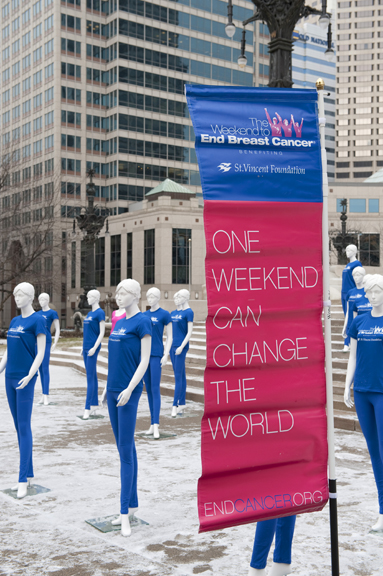
Transunion's Yoga Takeover: a great stunt on many levels
PR stunts come in all shapes and sizes. Goals pertaining to outcomes vary too, but everyone wants one thing: media coverage.
This blog has discussed key success factors for designing and staging a successful stunt. Today’s post takes things a step further and touches on important tactical questions you must ask in order to win.
God, my friends, is in the details. Don’t ever forget that when you’re planning a PR stunt.
I’ve divided the questions into categories. You’ll probably have more to add. Please do so in the comments.
Location:
- How easy is the location for media to reach? Go somewhere out of town or where they cannot possibly find parking and you’ll get no coverage and anger all your betters.
- Is the location iconic or easily associated with the city? This is a major bonus especially for local news coverage. When Hasbro used Lombard St in San Fran for Candyland’s anniversary they showed the importance of getting this right.

Candyland takes over Lombard St in SF: a sterling example of how using an iconic location can win the day
- Does the location have multiple photo shooting spots? If you can get a space that provides various shots from various angles this is great
- Do we need foot/other traffic? Probably yes, because these types of activities are meant to catch people’s attention. Thus it’s nice to have a few folks around to gawk at your amazingness.
- What time is the foot/other traffic highest? It could be at rush hour. It could be lunch. Once you have your space go check out traffic at various times.
- Will your stunt be “stationary” or “moving”? I’ve staged both types of stunts. Make sure you know the route if you are going to be moving people or objects.
- Do you need a permit? You probably do, so ask the city or landlord about the steps to obtaining one and the time frame.
- Do you need A/V and what is allowed? This will flow from the concept but you must make sure to ask whoever manages the space you’re using about parameters re noise etc.
Timing:
- When are you doing the stunt? This is, arguably, the most critical question. Make sure you know when news org’s have their assignment meetings and if they run newscasts/programs at particular times. Also, know when deadlines are and how much time people generally need to file.
- How long does the stunt last? Generally short and high impact is better. No need to go for more than 20 minutes in my view. Media won’t stay that long anyway. It’s a world of short attention spans.
Setup:
- Who is in charge of setting up the space on the big day? As with anything, success demands leadership. Make sure someone is in charge and understands precisely what the stunt is about and how it is supposed to go down.
- What time are setup and takedown? You’ll need to know this to get a permit.
- Who’s on signage placement and overall “stage management?” You need to get the brand name out there so this stuff is THE key issue. Makes sure someone owns this.
Talent:
- Is the talent you are using animate or inanimate? Both can work great but be advised that humans are far less enthusiastic about standing around and doing freaky things when it’s 40 below zero or rainy.

- Who is coordinating the talent? Whatever you’re concept make sure someone is singled out to brief and project manage the talent. If possible rehearse. If rehearsal is not an option, keep the activity simple enough that you can relay instructions to participants via email/Facebook etc.
- What time is the talent showing up? Fairly self-explanatory. Make sure your talent – esp if it is human – gets there early.
Media
- When does the advisory go out? We tend to send it 1-2 days before the stunt and make follow up calls – we don’t harass media but we make sure we’re on their radar.
- What’s the hook/elevator pitch? You don’t get a lot of time to explain your stunt to journos over the phone. Make sure you have your story straight and can explain why the media relevance in under 35 seconds. Also, always make sure you’ve listed interview opportunities (if any) on the advisory as this helps media get a full picture of what is on offer.
- Are you making press kits or directing media to an online resource centre for more info? Your choice will vary depending on what you’re doing.
- Assuming you are producing video and photos who is responsible? How long will it take to get these assets in place and out to media? Take too long here and you screw yourself for coverage.
- Are you using an SMR? How long will it take to get it prepped once the assets are in place? I am not so big on SMR’s (shoot me and call me a Luddite) because they can take awhile to prep. You’ve been warned!
- Who on the PR team is onsite to manage media? Who is remote? What’s the division of labour? Fairly easy to grasp, but it’s amazing how quickly stuff goes bad if the onsite and remote people don’t get their roles/responsibilities.
- Who’s briefing spokespeople beforehand and what are they saying? Again, it’s fairly obvious that this needs to happen. Don’t let the chaos/tumult of a stunt get in the way of a full and solid briefing of your mouthpiece(s).
That’s my initial list. Quite a lot in there, but PR stunts are DETAIL-centric affairs that require careful management.